Summer is primetime for projects. The sun’s out, the weather is fair, and the temperatures are comfortable. Winter is another story. Windchills dip below zero, snow covers the ground and most of us succumb to varying degrees of cabin fever. That’s a good time to roll up your sleeves and figure out what you can do, build, create and make.
We’re going to cover 7 simple and economical projects you can do this winter that are fun and easy to do. Some are themed to the holidays, and some are practical. Better yet, the projects are simple enough that you can get the whole family involved. It’s not like we’re the only ones wondering if winter will ever end.
Take a look and you’ll probably find a few projects that make sense and even look like fun. Here we go:
Build a Simple Chicken Coop Heater
When temperatures drop below freezing, chicken coops can get cold fast. That can affect egg production and even the health of your flock. Rather than investing in an expensive electric heater, you can build a simple, low-cost heating setup with materials you probably already have around.
Materials needed: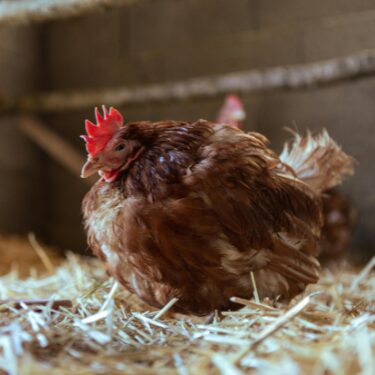
1 large terracotta pot
3 to 4 bricks or pavers
4 to 6 tea light candles (or a low-watt light bulb as an alternative)
Optional: small metal tray to hold the candles
Instructions:
Create a base using the bricks or pavers. Arrange them in a square pattern with enough space in the center to place your candles.
Position the candles in the open space. If you’re using a metal tray, set it on top of the bricks first and place the candles on the tray.
Light the candles and carefully cover them with the terracotta pot turned upside down. The pot will absorb the heat and radiate it outward slowly and evenly.
Ventilate properly. Make sure your coop has some airflow to prevent moisture buildup or fumes from the candles.
Monitor the setup. A single terracotta pot heater won’t make the coop hot, but it will raise the temperature just enough to keep water from freezing and the hens more comfortable.
If you prefer not to use open flames, a small bulb plugged into a solar power source can provide steady warmth. Either version works well for keeping your chickens safe and cozy without driving up your electric bill.
Build an Indoor Vertical Garden
May people have their share of indoor, potted plants by a windowsill, but there are only so many windowsills. With a few simple tools and some wood, you can build a hanging, vertical garden for a wall to grow anything from herbs to salad greens to flowers to vegetables. The size is up to you. It depends on the size of your wall space and ideally it should be located where it gets some amount of sunlight. We’ll indicate some sizes for a basic vertical garden, but you can scale it up once you understand the basic concept. Direct sunlight is best for at least a couple of hours a day, but ambient sunlight will work as well.
Tools:
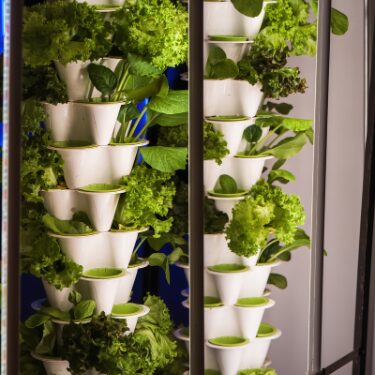
- Drill and drill bits.
- Drill screw bits.
- Jigsaw or table saw.
Materials:
- Three 4×36 inch 1/2-inch pieces of wood (one piece will be used to cut angled side supports and the other two for the main frame)
- Two 4×18 inch 1/2-inch pieces of wood (Also for the main frame)
- Six 3×14 inch boards (To build the pot boxes)
- Three 4×16 inch 1/2-inch pieces of wood (Also to build the pot boxes)
- A box of 2-inch wood screws
Instructions:
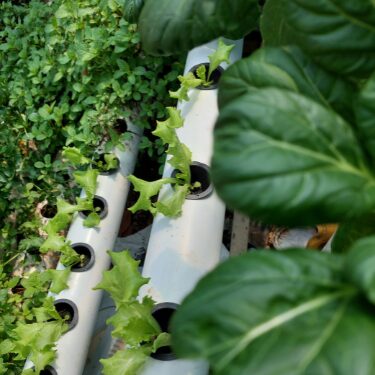
- Cut a 45 degree angle on both ends of two lengths of wood that are 36-inches long, and on two lengths of wood that are 18-inches long. This is the basic framework for the hanging planter.
- Drill two holes in into each corner of the frame and screw the frame together.
- Cut the third 36-inch board into 4-inch squares and then cut from one corner of the 4-inch board up to the top at 3-inches. These are the angled braces that you will use to support the bottom and front of the pot boxes. Attach them to the frame at the top, bottom and middle of the frame drilling and screwing from the back of the frame into the supports. They should be 14-inches apart on the frame.
- Attach the 3-inch by 14-inch boards to the bottom of the side braces to support the pots and the attach the 4-inch by 14-inch boards to the front of the braces.
- Seal and stain the vertical hanger if you like.
- Attach to the wall ensuring you are screwing it into studs that should be 16” on center. Screw both the top and bottom of the frame into the studs on both sides. The planter will get heavy especially after watering.
- Make sure you have pot dishes under your pots, so water does not leak onto the wood.
Inspired by methods used in some of the driest, most dangerous places on Earth, there’s a system lets you grow high-calorie, nutrient-rich food in minimal space, without backbreaking labor. It’s a “pocket-sized Garden of Eden” that keeps your family fed even when everything else around you fails.
This is a proven method that turns struggling soil and tiny plots into self-sustaining, hyper-productive food generators without relying on store-bought chemicals. It’s exactly what homesteaders like you need to protect your harvest, your family, and your freedom from corporate control and failing food systems.
It also comes with 3 FREE bonus guides that prepare you for real-world challenges:
- How to secure clean water for your family in any situation
- How to thrive even if supply chains fail or the economy collapses
- What items will become invaluable when the next crisis hits
➡️ Discover the High Output Pocket Farm here and claim your FREE bonuses right now ⬅️
Build a Fire in Winter Snow
When the ground is frozen or covered in snow a fire is hard to sustain.
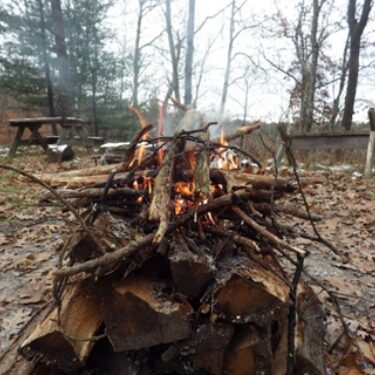
AS the fire burns the snow of ice in the ground underneath thaws and usually puts out the fire. The Scandinavians figured out a solution. It’s sometimes called the “Swedish Upside Down Fire.”
It is literally a fire built upside down.
- The first step is to put down your largest logs at the bottom of the fire. Line them up next to each other. 4 to 5 logs should do the trick.
- Your next step is to stack more logs at a 90 degree angle to your first row of logs. Split wood helps make for a good platform.
- Pile tinder on top of the second tier of logs.
- Build a teepee fire around the tinder.
- Light the teepee fire.
- As the fire burns it will travel from the top down as the coals begin to burn through the top logs and down into the base.
- By the time the fire reaches the ground, any ice or snow will have evaporated, so the fire won’t go out.
- Continue to toss wood on the fire as you would with a traditional fire. The ground underneath is now dry, and the fire will continue to burn.
Make A Pinecone Bird Feeder
Who needs a bird feeder when you have pinecones? The concept is simple.
All you need is a pinecone, floral wire, peanut butter and bird seed. If the pinecone is not fully open, place it on a heating vent overnight and in the morning it will be wide open.

- Wrap a 3 foot length of floral wire around the base of the pinecone a few times. Pull it down into the pinecone base on opposite sides.
- Smear peanut butter all over the pinecone making sure you fill all of the crevices and cracks.
- Drop the peanut butter smeared pinecone into a small bucket of birdseed and press it down and around. Shake the cup a bit to cover all of the peanut butter.
- Attach the pinecone bird feeder to the top of a branch and twist the wire under the branch to secure the pinecone to the branch. If you just let it hang down the birds will have nowhere to perch to feed. Wiring it to the top of a branch gives them a comfortable place to feed on the seed and the peanut butter.
Pinecone feeders are fun, but on a busy homestead, it’s easy to miss who’s stopping by. A NETVUE Birdfy Smart Bird Feeder does more than just feed the birds — it keeps track of every visitor, shows you who’s eating, and helps you spot pests like squirrels or unwanted critters before they become a problem. You can monitor everything from your phone while you’re tending the garden or doing chores, saving time and seed, and making sure your backyard ecosystem stays balanced. It’s bird-watching that actually works for you.
Check out the NETVUE Birdfy Smart Bird Feeder here
Cook Outdoors on A Canadian Candle
A Canadian Candle is a surprising way to create a fire and a perfect cooking fire with just one, large log. Ideally the log should be at least 12-inches in diameter and 2 feet long.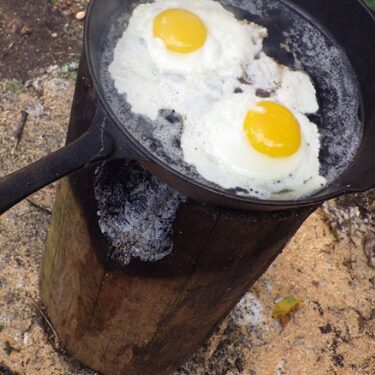
- Cut a groove across the top of the log with a chainsaw about 4 to 6-inches deep.
- Make a crisscross cut on the top of the log to the same depth.
- Start a small fire on top of the cut log. A small teepee fire works well.
- As the coals drop into the cut crevices the close surfaces of the grooves radiate heat back and forth creating intense heat that will keep the whole log burning.
It may come as a surprise but the flame shooting up out of the grooves will be both hot and intense. On a certain level it’s the concept of a rocket stove as the air enters the bottom of the groove to fuel the fire. The top of the log makes a great platform for a pot or pan for cooking or just heat on a cold winter day and it all happens with just one log.
Make Candles
Candle making is a very easy process. All you need is a spool of wicking string, some metal wick rings to weigh down the wick and hold it in place in the wax, and the wax. You can buy beeswax, paraffin and other waxes at hobby stores or online.
There are also candle molds you can buy.
We’re going to keep it simple and inexpensive and use a paper cup.
- Fill the cup to about a half inch from the top with your wax.
- Empty the wax into a crock pot or saucepan and begin to melt the wax on low heat.
- Keep an eye on it if you’re doing this on a stove. Wax is highly flammable.
- Attach a wick ring to the end of a piece of wick and tie the top of the wick to a skewer laid across the top of the cup.
- Pour the wax into the cup to about 1-inch from the top.
- Let the wax harden overnight in the cup.
- The next morning, tear off the paper cup starting at the top.
- You can place the base of the candle in a washed and dried tuna can if you want a base.
- Light your candle and it will burn for hours if not days.
Knit a Scarf
A scarf is one of the easiest things to knit if you are a beginner. No sleeves or other complex patterns to think about. It’s just basic knitting making a scarf as long and wide as you want it.
All you need is some yarn and two knitting needles. YouTube is loaded with instructional knitting videos and podcasts. You can also search the Internet or search for a book about knitting on Amazon. Once you get the hang of it you’ll have your scarf in no time.
Give a Few of These a Try
We tried to keep these projects simple and inexpensive, and most can easily be done in a day or less. Try making a pinecone bird feeder with the kids or impress your friends when you cook over that log blast-furnace called a Canadian candle. All of them give you the chance to beat the cabin fever of winter and give you practical solutions to some things you may have never considered.
15+ Homesteading Projects You Can Downsize for Simplicity
How To Build An Endless Hot Water System Without Electricity (Video)
Automatic Chicken Feeder That Needs No Electricity: How Do You Make It?





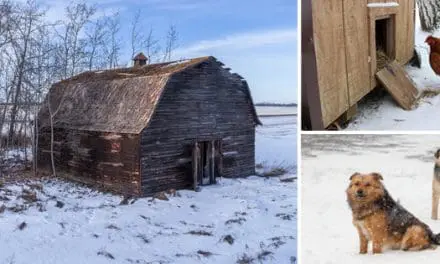

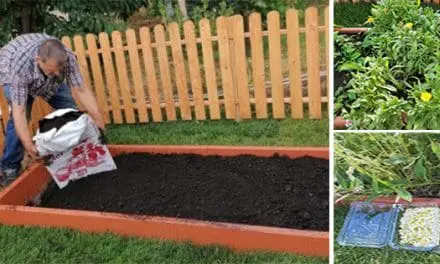

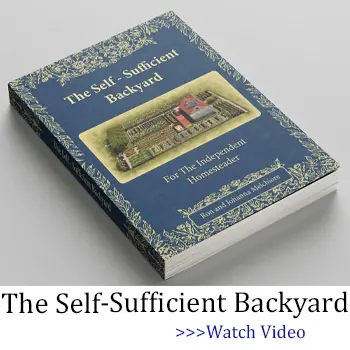

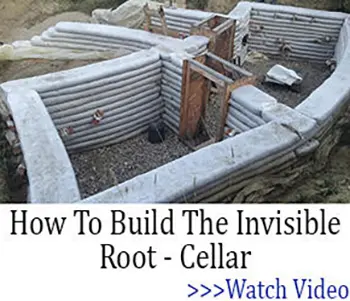




Fires are terrible for air quality
Especially during thr winter when there is more cloud cover
Building a fire just for the heck of it is not only a waste of wood but damaging the air you’ll breathe
U R GAY.